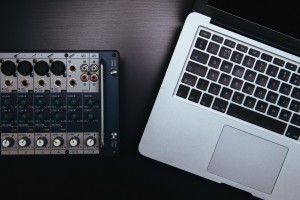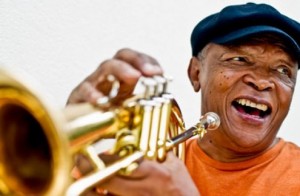| Okay, so you want to learn how to make beats and you need some insight on how to get started.You have some money saved and you need to know how to get some bang for your buck without breaking the bank. |
Well you’re in luck – in this article we will cover what you need to get going and how to do so.
The first thing you will need is your equipment. You must have a computer, Digital Audio Workstation software (DAW), and a MIDI controller (optional, but highly recommended).
For your computer, don’t sweat over MAC or PC, both are capable of doing the job well. The debate on which of the two is better really just comes down to preference. Personally, I like the MAC better, but if you ask my boss he’ll tell you the PC is where it’s at.
Let the debate continue…
I will say that MAC’s are a lot more expensive. If you don’t quite have the money for one – don’t fret – go with PC. You can probably get a PC with the same performance specs for half the price.
A lot of music software is labor intensive and will eat up your computer’s resources, so make sure you have some decent hard drive capacity and memory (RAM). You will need at least 1GB of RAM, but I highly recommend four or more, as well as getting a back up hard drive.
A Digital Audio Workstation is any software platform that allows you to create, edit, record, and playback audio/music on a computer. It’s commonly referred to in this article as a DAW.
Screenshot of Fl Studio

If you own a PC I would say definitely get FL Studio (Fruity Loops) for your first DAW software. It’s significantly cheaper than its competitors and is a great program to learn starting out. Depending on your budget, different versions of FL Studio range from $50 to $200 – get whatever version you can afford.
If you own a fairly new MAC your computer should have Garageband pre-installed. Garageband is basically just a stripped down version of Logic Pro, which is great for a beginner. My advice would be to learn the ins and outs of Garageband until you start to feel comfortable with it and then upgrade to Logic Pro.
Screenshot of Garageband

Screen Shot of Logic Pro

I use Ableton Live and Logic Pro on a daily basis. Ableton Live is probably the most complete DAW available, but I would recommend holding off on purchasing it until you gain some experience.
Ableton Live Screenshot

A MIDI Controller is basically a device that allows you to communicate and work with the virtual instruments in your DAW. Most often times a MIDI controller comes in the form of a keyboard with standard black and white piano keys. You will use this keyboard to create your beats.

I use an M-Audio Oxygen 49 MIDI keyboard. I think it cost me about $150, but you can find MIDI boards for as cheap as $50. I would recommend getting a controller with at least 49 keys.
If you can’t afford one there are still ways to make music in some of these DAW’s without it, but it’s a major pain in the butt. Do yourself a favor and get a MIDI controller.
A lot of music stores sell used gear for cheap. If I were on a budget – that would be the first place I would look for a lot of this equipment.
Technically you don’t have to have monitor speakers to start creating beats. You could use any speakers that hook up to your computer, but trust me when I say you’re going to want to get a pair of quality monitor speakers at some point – in this case, the sooner the better.
Monitors speakers are professionally designed for studio use and engineered to give you the true tonal (flat frequency response) qualities of an audio signal. They are crucial to getting a tight, clean mix on your beats and not to be over looked.
 |
Monitors speakers are professionally designed for studio use and engineered to give you the true tonal (flat frequency response) qualities of an audio signal. They are crucial to getting a tight, clean mix on your beats and not to be over looked. |
I own a pair of KRK Rokit 5’s – cost me a $150 a piece, but they’re worth every penny.
 |
To use monitor speakers you will need to have a hardware audio interface.This is basically a hub that will allow you to use your analog gear (like your speakers and most microphones) in conjunction with your computer.I use an MBox 2 that I bought with Pro Tools A while back. |
Other Jargon And Things Worth Mentioning
As you become a producer you will undoubtedly be brought into the world of third party plug-ins. These software programs are invaluable tools and can be anything from virtual instruments and sound libraries to effects and sound processors like compressors and Equalizers. Plug-ins work in conjunction with your DAW and give you an additional depth and dimension your DAW might not have.
Here is a list of companies that make some great third party plug-ins worth looking into.
- IK Multimedia
- REFX
- Spectrasonics
- Native Instruments
- Waves
- Antares
Loops and samples are a big part of the modern producer’s game and they can give your productions a big boost. By definition an audio loop is just some melodic or percussive sequence that repeats itself over a given period of time.
I look at loops as inspirational building blocks for your beats. You can easily sample a hot loop and layer your own instruments around it to create some great beats!
To get your hands on some quality loop and samples be sure to check out our products here at PlatinumLoops. We have a massive selection of genres, styles and instruments.
Setting up all of this equipment can seem a bit daunting at first especially if you’ve never done it before. My advice is to take your time and do it neatly. You don’t want cords all tangled up and equipment scattered everywhere.
First, make sure your DAW is installed and that your MIDI keyboard and monitor speakers are hooked up to your computer properly. All equipment should come with instructions, but here’s a diagram that should help simplify everything.

Once you have everything setup correctly, load up your DAW and locate its preferences Menu. Select your Audio preferences and make sure your Input / Output device selection is set to your Audio interface. This will ensure you get sound coming out of your monitor speakers and not the ones built in to your computer.

Check your MIDI preferences as well and make sure your DAW is recognizing your MIDI keyboard – after that you should be good to go.
Now, the fun begins – you can start making your own beats.
















